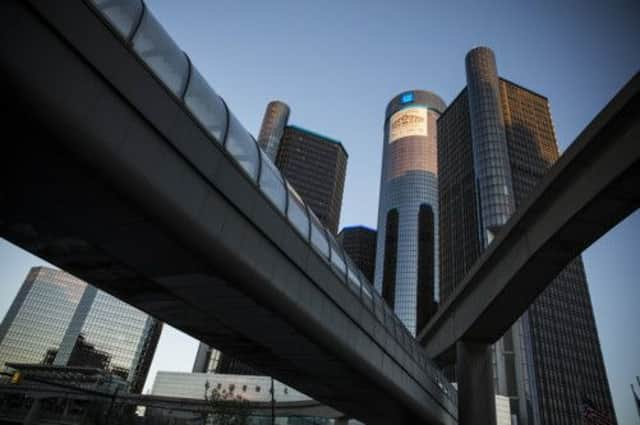Detroit: Judge upholds bankruptcy


In a landmark ruling, Judge Steven Rhodes found that the city once styled Motown, due to the dominance of the US car industry, was acting constitutionally when it filed for Chapter 9 bankruptcy over a £10.9 billion debt. He also ruled that public sector pensions would not be protected, a decision met with gasps of disbelief in court.
Under brutal cuts put forward by the city, 23,500 pensioners including former policemen and teachers could be left with an average of just £1,800 a year instead of £11,500.
Advertisement
Hide AdAdvertisement
Hide AdThe decision could be appealed but the ruling is being seen as a major step which is being keenly watched by other debt-ridden US cities.
The day began with dozens of protesters standing outside the federal court in Detroit with signs reading: “Protect our pensions. Now.”
Inside, Judge Rhodes was blunt about the city’s financial problems and said they have “led to decaying infrastructure and deteriorating quality of life.”
He said that the city “no longer has the resources to provide its residents with basic services” and added that it “could have and should have filed for bankruptcy long before it did”.
Though the judge ruled that pensions could be cut, he said he would not approve anything unless it was fair. He concluded: “The court finds that the city of Detroit was and is insolvent.”
Quite what that means for Detroit’s pensioners is unclear – they have been warned they could get as little as 16c on the dollar for their retirement funds, a cut of 84 per cent.
Current employees could also see huge cuts in wages and services will be reduced even further. Speaking later, Detroit’s mayor Dave Bing tried to cast the bankruptcy as an “opportunity”.
He said: “There’s going to be a lot of pain for a lot of different people. But in the long run, the future will be bright.”
Advertisement
Hide AdAdvertisement
Hide AdSharon Levine, the lawyer for the American Federation of State, County and Municipal Employees, said: “It’s a sad day for the people of Detroit.”
Detroit’s troubles came to a head in March when lawyer Kevyn Orr was appointed by Michigan state as the city’s emergency financial controller.
On 18 July he filed for bankruptcy but his decision was challenged by unions and creditors, which resulted in a nine-day trial overseen by Judge Rhodes before his ruling last night.
The city was the Silicon Valley of the 1920s and its population grew to two million thanks to well-paid jobs in its car factories which created an affluent middle-class of both blacks and whites.
But after the collapse of manufacturing Detroit is now better known for its abandoned buildings and the fact that a mere 800,000 people live there.
There is no longer a rush-hour in Detroit because the city is so empty and 40 per cent of the traffic lights don’t work in any case. So-called “white flight” has ravaged the tax base and more than a third of Detroit’s residents live in poverty in what has become the most dangerous city in America.
Among the plans being put forward is to shrink the city and sell off the collection of the Detroit Institute of Arts.